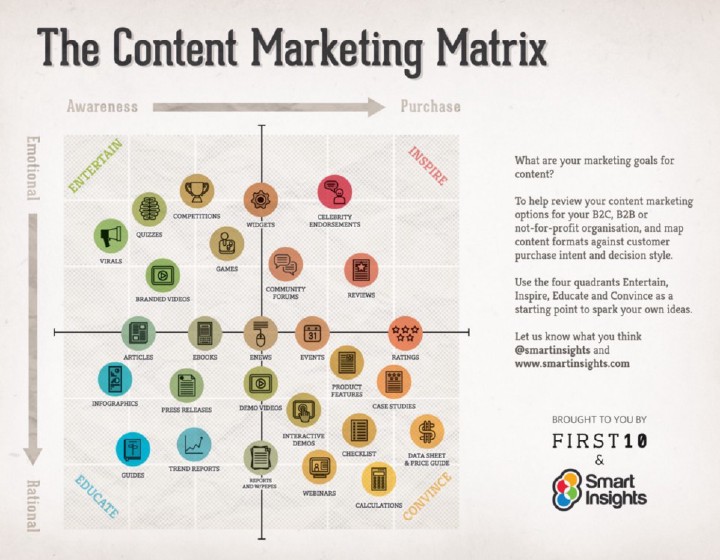
Social Media Week returned to Bristol this year, bigger and better. Providing us all with so many wonderful insights to take away. It was my first time attending Social Media Week in Bristol and I would recommend it to anybody working in social media. I’ve written this post whilst my head is still full of insights and inspiration and hopefully, it’ll help those who didn’t get a chance to attend this year.
So here goes:
Tell the story
This year’s social media week theme was ‘stories’. Business owners from all over, shared their own success stories as well as stressing the need for YOU, the marketer, the business owner and personality of a brand to start playing the storyteller on social media.
“Marketing is no longer about the stuff you make, but about the stories you tell.” Seth Godin
Show your audience what your products/services can bring to them, really resonate with their pain points and show that you are the best person to solve their problem. Although we tend to split people up into the rational or emotional buyer, the truth is that unless your customer is a computer, every human decision is influenced by emotion. Take the B2B customer for instance, yes, they are going to be rational, but they’ll probably be much more emotional when making decisions as their jobs are on the line.
Sharing your brand story is so important for building personal relationships. Show your USP, why you’re different and what you stand for. Luan Wise mentioned that there are three factors you as a brand need to build on; Know, like and trust. You can do this through storytelling. Just remember that people buy from people. Don’t create a disconnect between your business and a customer by acting like a robot, show your personality.
Content types and the buyer journey
At any given time, your potential customers are at different stages in their buying journey, so it’s your job to know which content will push them along the funnel. The Content Marketing Matrix by Smart Insight was used in a few sessions during Social Media Week and provides a great framework for your content strategy. Pair this with your persona research and you’ll be able to determine the type of material you need to produce.

_Source: Smart Insights*_
Stop the noise and source killer content ideas
When we use any social site there’s always algorithms involved which determine where our content sits on a user’s feed and we need to learn to work with them if we want to succeed. A part of working with them is to understand that pushing spammy content, with no meaning is not going to get you seen. In fact, the more unengaged content you post, the lower you will score, and Facebook, in particular, will push you down to the bottom of users feeds. Instead, less frequent but higher quality content that drives real interactions and shares should be part of your content strategy.
To begin crafting meaningful material, Luan Wise suggested using the following sources:
1. FAQ’s
Sit down with your colleagues and check whether there are any reoccurring questions in your inboxes that customers are asking you. If there are, simple, create some content for it.
2. Answerthepublic.com
This is another way to see what people are asking. The tool lets you input keywords or phrases relevant to your services and spins up all the questions people are asking on Google and Bing around those topics.
3. Competitors
A quick win is to browse your competitors’ sites, what are they producing? What’s working for them? If you find something that is particularly popular, replicate it but put your spin on it!
4. Professional bodies
These guys are the experts in your industry, they know their sh*t so use them. Use their research and create something that would be useful for your audience. Even including your opinion on a topic, they have researched will be a great content piece. Your audience wants to hear your opinion.
5. Social media insights
This is the easiest way to get your creative juices flowing. See what’s trending, what people are asking, look at hashtags and begin crafting material that’s of interest to your followers. It’s easy to get carried away with this so make sure the stuff you create fits with your brand, its personality and your industry.
It’s far from one size fits all
Firstly, stop spreading your resources too thin by trying to use all the social media platforms. If you’re targeting the 70+ audience, it’s highly unlikely they’ll be converting through sponsored adverts on Snapchat. Use your persona research to understand where your audiences can be found and invest your marketing budgets on those specific channels.
Once you know where to find your audience, you need to understand what they expect to see on these social hubs because not all content is suitable for every platform.
The general guidelines are:

-
Facebook: It’s a community. Share the unseen side of your daily business lives. Cake sales, charity runs, team exercises/trips, show the world why working at the business is great.
Use live videos, curated content and Facebook stories to engage your followers. -
Instagram: It’s all about visual content! Use images, videos and use stories (Boomerang is my fave) to make beautiful and thoughtfully composed content that will excite your users. Use this platform to show sneak previews and behind the scene snapshots to keep them wanting more. ‘60% of people learn about products/services on this platform’ and that’s undoubtedly because visuals are a much more fun way of learning.
If you haven’t already, switch to an Instagram Business account. There’s so many more features and functionalities. You can include CTA links which allow users to contact you easily.
-
Twitter: People come here to seek the latest news. Keep your followers up to date with industry, company and product news. Blog posts, article and newsletter links are great ways of sharing the need to knows. You can also keep it interesting with photos, infographics and videos on the latest trending topics.
-
LinkedIn: Look at this platform as your CV. It’s a place people come to scope out whether you’re the right person/business for the job. So, show off your expertise. Share any professional content, company events, news and blogs you’ve written. Let them learn all about you. The platform has a job listing section, so create job adverts and share career information because it’s a great way of attracting future employees.
SEO and content marketing are best friends
Content marketing and SEO work together to fuel your digital success. Elements of SEO are about researching relevant keywords and making use of them in your content so that your material ranks higher in search engine results pages (SERPs). Hunt specific and popular keywords, that relate to your business and make sure they’re in blogs. In a session with Bex Band, founder of Love Her Wild and blog writer, she advised on using backlinks in blogs to improve SEO ranking. This is because connecting a blog with a high-quality website e.g. your company site, will increase the chances of your content reaching the top spots on Google and ensure maximum people are engaging.
And there you have it. Despite the drizzly weather, it has been a great week for new learnings and insights, and I’d like to thank all of the speakers! You can find a full list of marketing trends and the latest on Social Media Week here
#SMWBristol #socialmediaweek #socialmediatips #digitalagency #SEO #smallbusinesssummit #B2B #contentmarketing